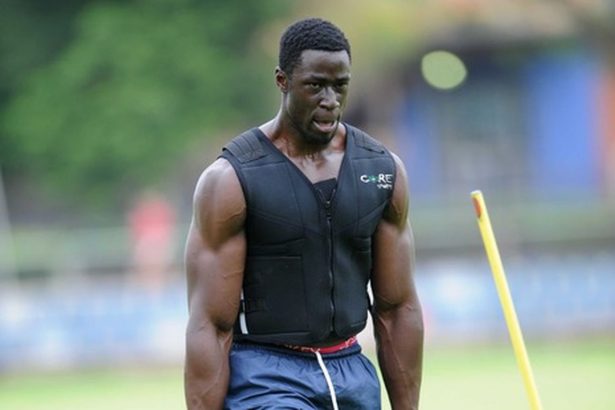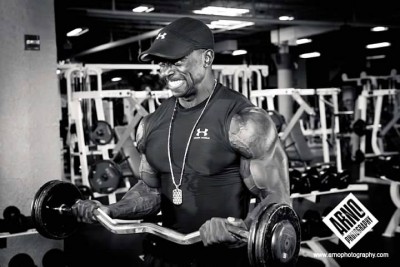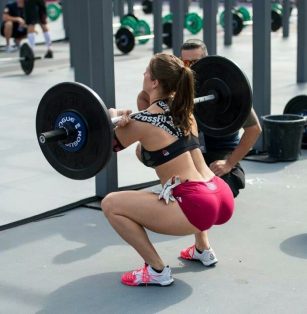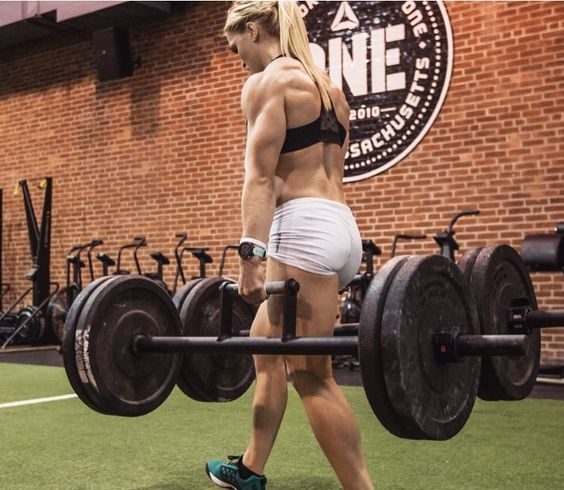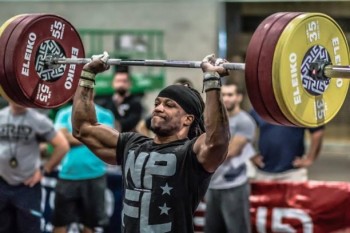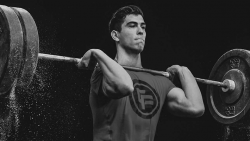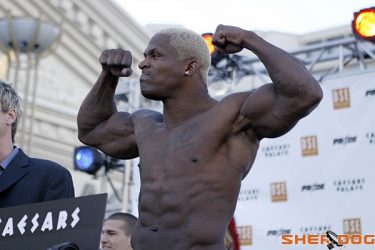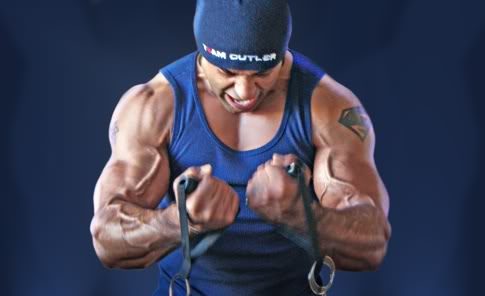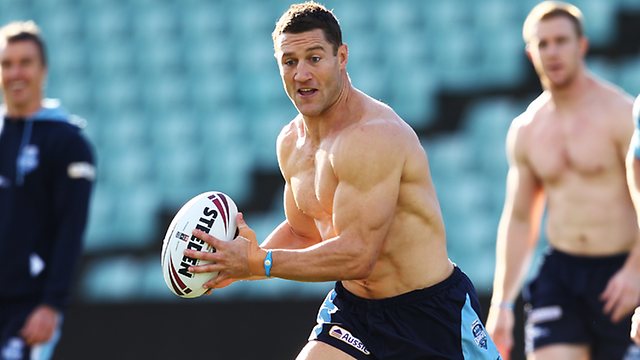 Today I am going to give you a complete guide to build muscle fast.
Today I am going to give you a complete guide to build muscle fast.
The longer that I am in the lifting game, the more I look to be more efficient with my workouts. In a perfect world, I would write programs for my clients and myself that would include the following:
- Soft tissue works with various foam rollers and massage balls
- Corrective exercises to improve any dysfunctions
- Mobility work
- Stretching
- Groundwork (rolling, crawling, Get-ups, etc.)
- Nervous system development/power work (med ball throws and plyos)
- Strength training
- Conditioning/cardiovascular work
As you can imagine, this would equate to a very long workout. While all of these have a place in a workout, time is of the essence for many lifters. I have seen time and time again that people will set themselves up for failure by programming too long of workouts that they simply can’t commit to. From jobs to family and everything else in between, stuff just seems to get in the way.
Another huge factor needs to be addressed when starting a program; what is the goal? Focusing on too many things at once is just not possible for the majority of the population. If you try to focus on conditioning, strength, building muscle and more, something has got to give. Your body cannot adapt to so many different stresses at once unless you are a freak of nature. If you are one, more power to you. I just don’t see it that often.
If your goal is muscle growth then that is what you should focus on. That doesn’t mean you have to totally neglect mobility, conditioning and strength. You just need to make building muscle the primary focus. In the Fast Muscle series muscle growth will be the only goal. Workouts will also be brief and intense and performed often. Up to 3-6 times a week, depending on the individual. Quick and intense workouts to build muscle will be what this program is all about.
Related: Best Supplement Stacks to Build Muscle
How To Build Muscle Fast
There are a few things that need to happen in order to produce muscle growth.
- You need to use significant load when lifting weights
- Enough time under tension to create structural damage to the muscle tissue
- Enough stimuli to upregulate anabolic hormones and increase protein synthesis
- Proper recovery and workout nutrition
Many people often think that if they lift as heavy as possible, or use as much volume (sets and reps) as possible they will trigger muscle growth. Lifting more weight and doing it too much can often lead to overtraining; beat up joints and poor results in the muscle development category.
I have found that there is a sweet spot for time under tension for each muscle group, load, and volume in order to produce muscle growth. In general, spending about 30-45 minutes working 2-3 larger muscle groups (chest, shoulders and triceps for example), with 65-85% of your estimated 1-rep max, in a circuit fashion, will produce the best results for muscle growth.
Here is a breakdown of how this all works.
Related: Supplements That Build Muscle Fast
Load, Sets, Reps, Frequency and Rest Period
There is no doubt that you have to lift heavy weights in order to get stronger and build muscle. You can’t lift tiny weights and expect to get huge. But there is a fine line. If you lift too heavy you will not be able to create enough time under tension in order to produce muscle growth. A review of the literature on hypertrophy reveals that the most important factor in training is mechanical tension.
Dr. Keith Baar also found that the key regulator of muscle protein synthesis is something called mTOR pathway. The more mTOR stimulated, the protein synthesis occurs, and there’s a direct relationship between mTOR and mechanical damage. The more tension the muscle is put under, the greater the mTOR stimulation. Since mTOR starts to be inhibited after about 60 seconds.
So if you do some quick math on how long a set takes (1 second up, 1 second hold, 2-3 seconds down), you need to shoot for about 5-12 reps using 65%-85% of your 1-rep max to create enough time under tension (TUT) to produce the best environment for muscle growth.
Sets and reps will also be key here. You cannot blast your back or legs with endless amounts of sets. You simply will not recover from one workout to the next. Since working a muscle group more frequently increases your ability to build muscle, we need to recover properly before the next workout. Larger muscle groups do need to be hit at different angles, so we will pick 2-3 exercises per body part for 3-5 sets each.
Even though we are performing these in a circuit fashion does not mean you should blitz through the workout and not take time between sets. We know that testosterone drops significantly in workouts lasting more than one hour, which is obviously not good for muscle growth. It seems that mTOR acts the same way.
It was also discovered that workouts using a great deal of ATP also lower mTOR, which means we want to use as little energy as possible during maximal tension workouts if the goal is hypertrophy. So we need to recover properly between sets and avoid too much metabolically demanding activity during the workout, otherwise, mTOR will start to shut down, limiting the hypertrophic effect of the workout. Brief workouts with longer rest periods are what we need to do.
Our goal is not to burn fat, or increase conditioning. We can accomplish that by including some finishers at the end of a workout, or some cardio on an off day. Here we are focusing on muscle growth. Just look at the old-school bodybuilders and how much they rested between sets. They were not doing metcon workouts like CrossFitters. Their goal was to build muscle fast, not win a race. Their abs were built in the kitchen.
The sweet spot for rest between sets seems to be 90 seconds to 2-minutes. We also further the rest period between certain exercises by performing them in a circuit fashion. For example, if you are doing bench press, push-ups and dips for chest, it can be almost 7-10 minutes before you get back to the bench press. This allows the nervous system to rest mechanically for a particular exercise.
The other benefit of performing split body part workouts as a circuit is that you create enough full-body stimuli to up-regulate anabolic hormones and increase protein synthesis. Just wait until you get to leg day and you will see how much every inch of your body is screaming even though it is just leg day!
Workout Nutrition
The research is clear that we need a high concentration of amino acids in the bloodstream in order to recover and produce muscle growth. Making sure you have enough amino acids before, during and after a workout will optimize your hypertrophy potential.
Consume 30-60 grams of whey protein 30-60 minutes before a workout, drink 10-15 grams of Branched Chain Amino Acids during your workout, and another 30-60 grams of whey protein after your workout to ensure you have a high concentration of amino acids in your blood to support recovery and muscle growth.
Related: TestoFuel Review: The Best Testosterone Booster for Muscle Building
Cheat Sheet To Build Muscle Fast
Use this cheat sheet below to help you increase mTOR, anabolic hormones and protein synthesis for muscle growth:
- Use a weight that is about 65-85% of your 1-rep max, depending on the number of reps
- Stay in the 5-12 rep range
- Use a 1 second up, 1-second hold, 2-3 seconds down (1/1/3) rep tempo and don’t cheat the eccentric portion of the rep
- Shoot for about 60 seconds, but no more of maximum tension on your muscles
- Decrease the metabolic demands of your hypertrophy workouts by fully recovering between sets
- Work each muscle group one-two times per week
- Consume enough amino acids around your workout to optimize mTOR, protein synthesis, anabolic hormones, and muscle growth
The Workouts
Below are two example workouts for each muscle group that I have used in the past and experienced exceptional benefits. It is up to you as to how you want to split them up but I suggest the following:
Workout 1: Chest, Shoulders
Workout 2: Legs, Loaded Carry
Workout 3: Back, Arms
Do not workout more than 3-days in a row without a rest day. You can perform each workout day up to 2 times per week for advanced lifters. I suggest only doing this for 4-6 weeks. For those with limited time, hitting each muscle group once per week can also produce great gains. Reps and sets should stay the same but frequency and of course load will need to be adjusted to your individual needs.
Fast Muscle: Chest
Workout #1
If you want to build thickness and mass in the chest area, you need to start with incline presses! I love the flat bench press, but nothing beats the incline barbell press. It builds your chest muscle from the clavicle to sternum and negates that sagging chest look.
For the heavier workout of the week, we want to stick with presses and push-ups. We can work more muscle at one time with these moves and safely use more weight. We will save the flys for the higher rep day.
Exercise Sets Rep Tempo Rest Period
1A Incline Bench 4 6 1/1/3 90 seconds
1B Flat DB Bench 4 6-8 1/1/3 90 seconds
*1C Push-ups 2 6 1/1/8 2-minutes
** Make sure to count the 8-second eccentric portion of the rep very slow. If the reps are too easy, add weight.
Notes: Perform all three exercises in a circuit fashion. After 1 warm-up set using lightweight (except the push-ups), use a weight that is about 80-85% of your 1-rep max. Make sure to rest at least 48 hours before you perform the next chest workout.
Workout #2
Most people utilize the flat bench press for heavyweight and low-reps. But I have seen bodybuilders build a huge chest with high rep bench presses (Franco, Arnold, football players).
We then move onto the incline fly to put in some detail in the upper chest. Finish off with some push-ups and your chest is finished for the week.
Exercise Sets Rep Tempo Rest Period
1A Bench Press 3 10 1/1/3 90 seconds
1B Incline DB Fly 3 10 1/1/3 90 seconds
1C Push-ups 3 12 1/1/3 2-minutes
Notes: Perform 1 light warm-up set and then start at a weight that is about 65% of your 1-rep max (except the push-ups). Add weight on each set until you reach about 80% of your 1-rep max. Make sure to rest at least 48-72 hours before you perform your next chest workout.
Fast Muscle: Shoulders
Workout #1
If you look at anyone with huge shoulders, they are sure to tell you that they pressed a heavy bar over their head to get them. While you are fresh at the start of the week, we will take advantage of pressing some heavyweight above our heads. We then move onto the dumbbells for some side raises to get those huge caps on the side of the delts. The machine rear delt fly machine is much better done with heavy weight and low reps as compared to the dumbbell, so we will finish them off here to create a huge three-headed monster.
Exercise Sets Rep Tempo Rest Period
1A BB Press 5 5 1/1/3 90 seconds
1B DB Side Raise 5 5 1/1/3 90 seconds
1C DB Rear Delt Fly 3 5 1/1/3 2-minutes
Notes: Perform all three exercises in a circuit fashion. After 1 warm-up set using lightweight, use a weight that is about 80-85% of your 1-rep max. Make sure to rest at least 48-72 hours before you perform the next shoulder workout.
Workout #2
For this workout, we are looking to flush as much blood into the shoulders as possible and break down a ton of muscle fibers. The dumbbell shoulder press, cable side raises, and face pulls are the perfect trio of shoulder exercises to do just that.
Exercise Sets Rep Tempo Rest Period
1A DB Shoulder Press 3 12 1/1/3 90 seconds
1B Cable Side Raise 3 12 1/1/3 90 seconds
1C Face Pulls 3 12 1/1/3 2-minutes
Notes: Perform 1 light warm-up set and then start at a weight that is about 65% of your 1-rep max. Add weight on each set until you reach about 80% of your 1-rep max. Make sure to rest at least 48-72 hours before you perform your next shoulder workout.
Fast Muscle: Triceps and Biceps
Workout #1
If you look at anyone with big arms, they can perform a fair amount of dips and chin-ups. Their arms are not only big, but they are dense, hard and strong. While you are fresh in the first part of the week, we will be lifting heavy.
Exercise Sets Rep Tempo Rest Period
1A parallel bar dips 5 5 1/1/3 90 seconds
1B chin-ups 5 5 1/1/3 90 seconds
Notes: Perform these two exercises as a superset. Perform 2-3 easy warm-up sets and then proceed to your work sets. If 5 reps are too easy, add weight to a belt or use a weight vest.
Workout #2
For this workout, we are looking to flush as much blood into the arms as possible and break down a ton of muscle fibers. We really want to isolate the muscle to dig deep into the mind-muscle connection of the exercises. The barbell curl done with higher reps is sure to leave every muscle fiber in the arms screaming that the chin-ups did not do on day 1. The overhead triceps extensions with the rope provide a big range of motion to completely nail all three heads of the triceps for the week.
Exercise Sets Rep Tempo Rest Period
1A Barbell Biceps Curl 3 10-12 1/1/3 60 seconds
1B Rope Overhead Triceps Extensions 3 10-12 1/1/3 60 seconds
Notes: Perform 1-2 light warm-up set and then start at a weight that is about 65% of your 1-rep max. Add weight on each set until you reach about 80% of your 1-rep max. Make sure to rest at least 48-72 hours before you perform your next workout.
Fast Muscle: Back
Workout #1
When training the back, you can’t forget to utilize pull-ups and deadlifts. Where people go wrong with these exercises is going too light, or doing too many reps. Pull-ups and deadlifts produce the best results when done with a heavy load and low-reps. I have found that around 5-reps produces some great strength gains, as well as thickness and overall mass in the lower back, lats, and upper back. The machine row is also great to utilize when trying to go heavy. If you go too heavy on bent over rows, you are likely to use poor form and risk throwing out your back. The machine row is perfect for heavy weight, time under tension, and lowering the risk of injury when using heavy loads.
Exercise Sets Rep Tempo Rest Period
* 1A Pull-ups 5 5 1/1/3 90 seconds
1B Machine Row 5 5 1/1/3 90 seconds
**1C Deadlifts 5 5 EXP 2-minutes
*Add weight if the reps are too easy.
** For the deadlifts, use the first 3 sets as warm-ups. These should be relatively light and not be anywhere near 80-85% of your 1-rep max. The last 2 sets should be the only sets around 80-85% of your 1-rep max.
Notes: Perform all three exercises in a circuit fashion. After 1 warm-up set using light-weight (except the deadlifts) use a weight that is about 80-85% of your 1-rep max. Make sure to rest at least 48-72 hours before you perform the next back workout.
Workout #2
After your first back day of the week, your muscles are ready for some increase in blood flow to the muscle and some extra byproduct to be built up to produce lactate and increase growth hormone. The lat pulldown is much more favorable when using higher reps than the pull-up. The 1-arm dumbbell also produces great results when utilized with high reps (The Kroc Row). Finish off the back with some shrugs, and you are on your way to some serious upper-back growth!
Exercise Sets Rep Tempo Rest Period
1A Lat Pulldowns 3 12 1/1/3 90 seconds
1B 1-Arm DB Rows 3 12ea. 1/1/3 90 seconds
1C Barbell Shrugs 3 12 1/1/3 2-minutes
Notes: Perform 1 light warm-up set and then start at a weight that is about 65% of your 1-rep max (except the push-ups). Add weight on each set until you reach about 80% of your 1-rep max. Make sure to rest at least 48-72 hours before you perform your next back workout.
Fast Muscle: Legs
Workout #1
When I think of athletes with huge quads, I think of Olympic lifters. They perform a ton of fronts, heavy. So we start the week off with heavy front squats to get the quads growing. The hamstrings are made of primarily fast-twitch muscle fibers, so stick with heavy weight on the RDL’s. By the time we get to the lunges, we are pretty cashed, but we need to hit the glutes, hams, and quads just a little more. Place a heavy bar on your back and finish off the legs with walking lunges.
Exercise Sets Rep Tempo Rest Period
1A Front Squats 5 5 1/1/3 90 seconds
1B RDL’s 5 5 1/1/3 90 seconds
1C Walking Lunges 3 5 ea. 1/1/3 2-minutes
Notes: Perform all three exercises in a circuit fashion. After 1 warm-up set using lightweight, use a weight that is about 80-85% of your 1-rep max. Make sure to rest at least 48-72 hours before you perform the next leg workout.
Workout #2
The quads are a unique muscle group that needs a variety of stimulation. While the Olympic lifters left heavy and have huge quads, cyclists also have huge quads for not lifting much weight. This is because the quads also respond to high reps. Heavy and high rep back squats will finish off the quads perfectly, leaving no muscle fibers left untapped.
Exercise Sets Rep Tempo Rest Period
1A Back Squat 3 10 1/1/3 90 seconds
1B Leg Curls 3 10 1/1/3 90 seconds
1C Step-ups 3 8ea. 1/1/3 2-minutes
Notes: Perform 1 light warm-up set and then start at a weight that is about 65% of your 1-rep max. Add weight on each set until you reach about 80% of your 1-rep max. Make sure to rest at least 48 hours before you perform your next leg workout.
Fast Muscle: Loaded Carry Complex
In the last couple of years, the loaded carry (most notable the farmers carry) has exploded on the scene. Everyone from bodybuilders to CrossFitters have started to include various loaded carries into their routines and for a good reason.
A loaded carry is where an athlete picks up and carries a heavyweight and walks with it for an extended period of time or distance. This can be done with various objects, such as dumbbells, kettlebells, sandbags, stones, really any object that will challenge you to carry.
The loaded carry poses an array of benefits, most notably increasing work capacity – the ability to perform real physical work as measured by force x distance/time (which is average power). Loaded carries also help improve endurance, grip strength, core strength, and build muscle. The loaded carry is one of the best all-around movements to perform that compliments major movements, such as the squat, deadlift, and bench press perfectly.
There are many variations of loaded carries that can be used besides the traditional farmers carry (one object in each hand by your side). You can utilize unilateral carries (a load on one side of the body) to improve muscular imbalances, symmetry and core strength. The waiter carry (one arm above the head), rack carry (hand by the chest and shoulder), and the suitcase carry (one arm at your side), provide a ton of strength and conditioning benefits.
The workout
- Perform this workout 2 times per week on its own, or at the end of a weight training session.
- The workout will total 12-minutes (6-minutes on each side)
- Start by picking a weight (preferably kettlebell) you can carry over your head with one arm locked out and asymmetrical postural position for at least one minute.
- Once you start to lose form, bring the bell down to the rack position.
- As you get fatigued and lose form in the rack position, bring the bell down to your side for a suitcase carry until you reach the full 6-minutes.
- Rest as minimal as possible and repeat the sequence on the other side.
6-minutes on each side
- 1-Arm Overhead Carry
- 1-Arm Rack Position Carry
- Suitcase Carry
Time To Build Muscle Fast
There are many ways to build muscle but some work better than others. A mix between science and anecdotal evidence along with efficiency and hard work will help you produce the best results. You don’t have to overthink it nor do you have to be in the gym for hours upon end. You just need to have a good strategy and stick with it. Now that you have a plan of attack it is now time to get to work. There are no excuses now. It’s time to hit the weight room and build muscle fast.

Justin Grinnell is a highly respected Certified Strength and Conditioning Specialist (CSCS), Certified Personal Trainer (CPT), and CrossFit Level 1 Trainer with over a decade of experience helping clients achieve peak performance. He is the founder and owner of State of Fitness in East Lansing, Michigan — a premier training facility recognized as one of the leading fitness centers in the Midwest.
Since opening its doors just four years ago, State of Fitness has grown to over 450 active members, each benefiting from Justin’s proven training systems, science-based programming, and hands-on leadership. His expertise spans athletic performance, strength development, body composition, and functional training, making him a sought-after coach for both everyday clients and competitive athletes.
Justin is also an established voice in the fitness industry. For more than ten years, he has been a featured writer for Healthy & Fit magazine and currently contributes to Muscle & Fitness, one of the most recognized publications in the industry. Through his blog, GrinnellTraining.com, he shares actionable training tips, nutritional strategies, and expert insights with a global audience.

